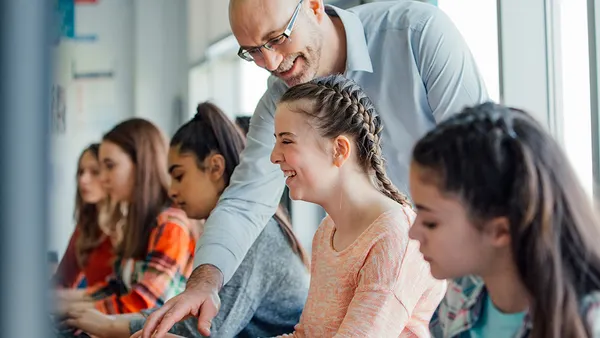Dive Brief:
- With an ongoing rise in school shootings, school officials are now focusing on the least safe space in school buildings, typically identified as the cafeteria.
- The Los Angeles Times reports that 64 school shootings occurred in 2014, as compared to 38 in 2013.
- To protect students, schools can create blueprints telling them what to do and where to be if they're not able to be locked inside classrooms.
Dive Insight:
Dennis Lewis, the founder of Edu-Safe, a school safety consulting company, recommends that schools take the following steps when thinking about the creation of an overarching school safety plan. First, prepare by establishing a protocol and identifying "safe sites" where school attendees can congregate, and practice with drills. Then, come up with one-word commands for exclusive use in emergency situations. Finally, provide options so that staff and students aren't left with a single choice for refuge.
A total of 29 school shootings happened in 2015, and while that number is down from both 2013 and 2014, the amount of school shootings in K-12 classrooms has reportedly tripled since 2011. Districts now employ an estimated 10,000 to 14,000 school resource officers nationwide, and many have started to use metal detectors, surveillance cameras, and new tech initiatives like visitor management systems. In Palm Beach, FL, teachers carry devices with panic buttons and microphones that connect to the school’s front desk.
Still, such measures can be costly. Districts need to weigh options, and look to real-life examples before committing to new technology. Los Angeles and New York, for example, are two cities with differing approaches to school threats. Recently, Los Angeles shut down schools while New York kept them open in potentially dangerous situations, with both districts criticizing the other's actions. Students, however, were kept safe in both locations.






 Dive Awards
Dive Awards







